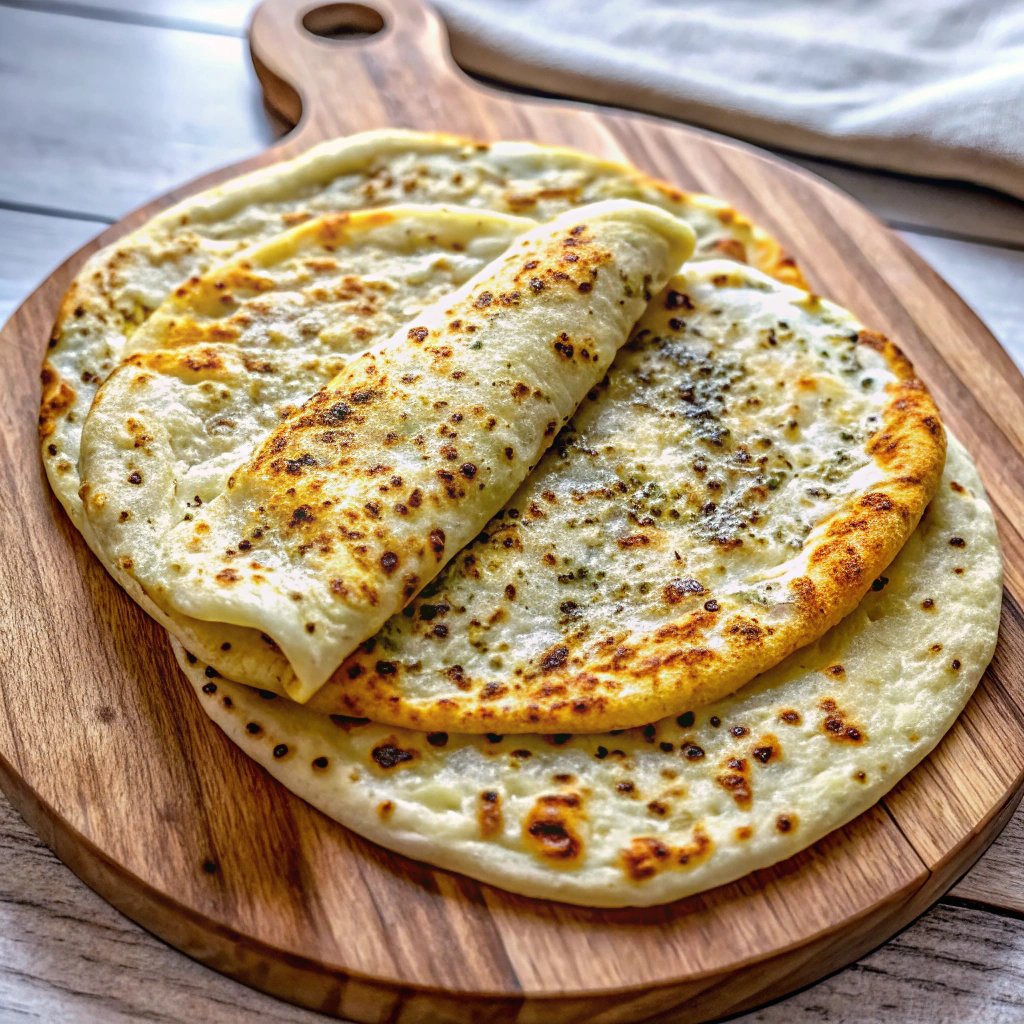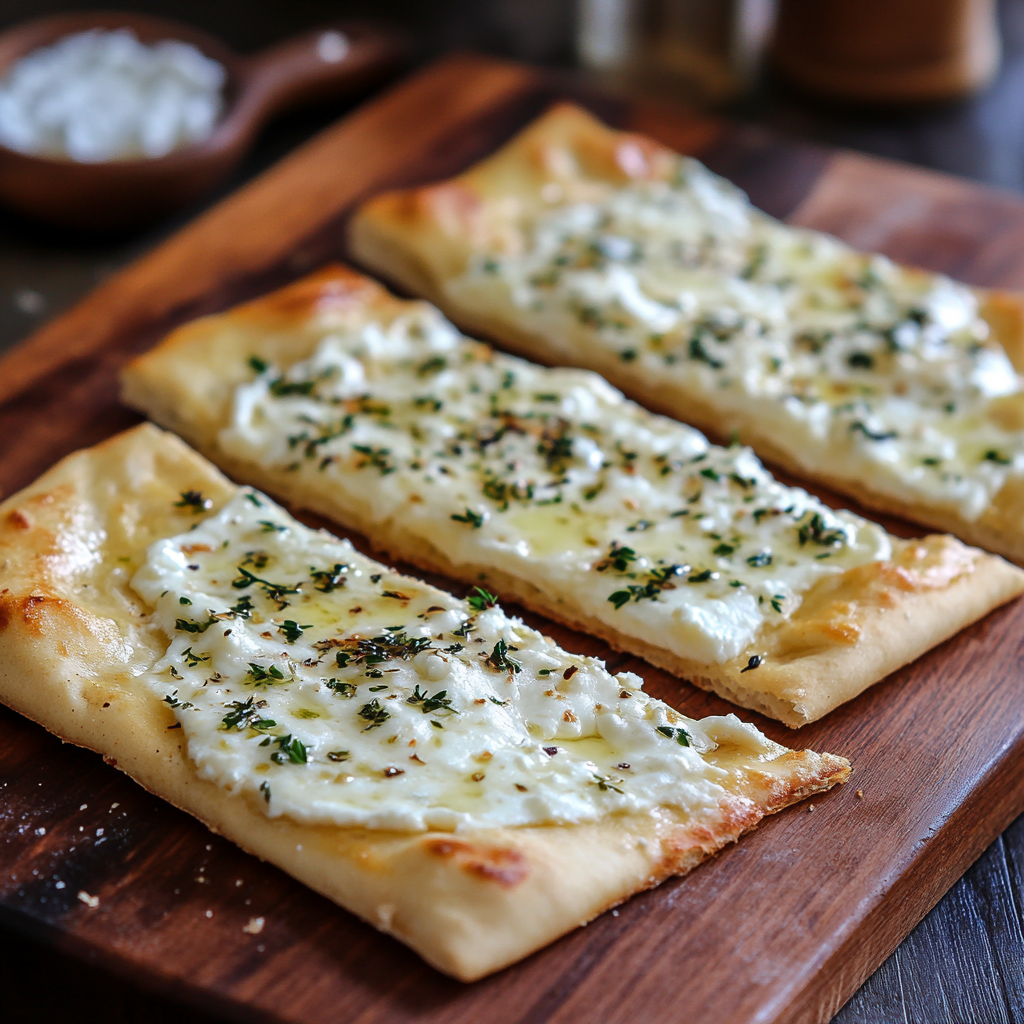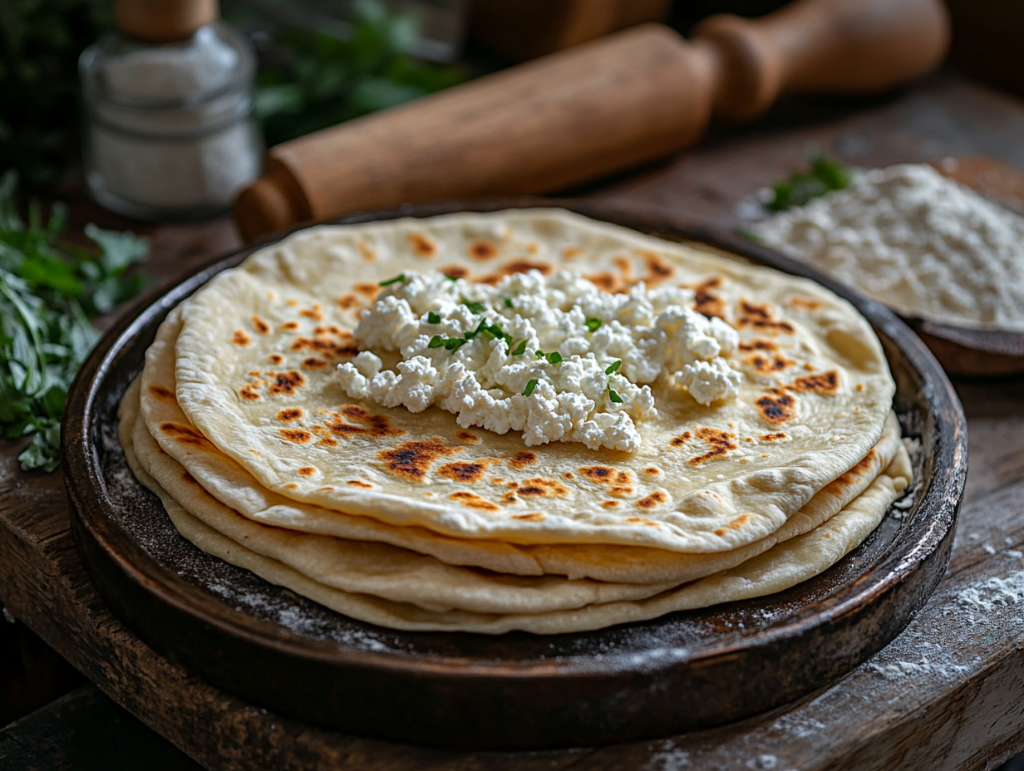Cottage cheese flatbread has taken the culinary world by storm, offering a delicious and healthy alternative to traditional bread. Packed with protein and bursting with versatility, this flatbread can be tailored to suit a variety of diets and meal plans. Whether you’re curious about its nutritional benefits, eager to try your hand at making it, or simply looking for creative ways to enjoy it, this guide has you covered. Let’s dive into the world of cottage cheese flatbread and discover why it’s a must-try for anyone who loves wholesome and tasty food.

Table of contents
What is Cottage Cheese Flatbread?
Cottage cheese flatbread is a delightful fusion of simplicity and nutrition. Made with just a few basic ingredients, this flatbread boasts a soft texture and a subtly tangy flavor, thanks to its star ingredient: cottage cheese. Unlike regular bread, which often relies on yeast or baking powder for leavening, cottage cheese adds both moisture and structure, resulting in a unique culinary creation that’s as easy to make as it is satisfying to eat.

One of the reasons cottage cheese flatbread has gained popularity is its incredible versatility. You can whip it up in under 30 minutes, and it pairs beautifully with everything from savory dips to sweet toppings. It’s also a fantastic way to incorporate protein-packed cottage cheese into your meals without feeling like you’re compromising on taste or texture.
Health Benefits of Cottage Cheese in Flatbread
Beyond its delightful taste, cottage cheese flatbread is a nutritional powerhouse. Cottage cheese itself is rich in protein, low in fat, and contains essential vitamins like B12, which supports energy production and brain health. When incorporated into flatbread, it transforms a simple dish into a nutritious and satisfying meal option.
Compared to traditional flatbreads, which are often high in carbs and low in protein, this version offers a healthier balance of macronutrients. It’s an excellent choice for those following low-carb, high-protein diets or anyone looking to enjoy bread without overloading on refined flours.
Cottage cheese flatbread isn’t just a trendy recipe—it’s a wholesome, versatile option that fits seamlessly into modern dietary needs while satisfying your taste buds.
How to Make Cottage Cheese Flatbread
Key Ingredients for a Simple Flatbread
Making cottage cheese flatbread is surprisingly easy, requiring just a handful of ingredients you probably already have in your kitchen. The most essential component is, of course, cottage cheese. Its creamy texture and mild flavor make it the perfect base for a soft and pliable flatbread. For those who need alternatives, Greek yogurt or ricotta can be swapped in, though they may slightly alter the texture and flavor.

Next, you’ll need flour to bind the mixture together. Almond flour is a favorite for those on a low-carb diet, while oat or whole wheat flour works wonderfully for a heartier option. Baking soda or powder can add a little rise, though it’s not always necessary depending on the recipe. Don’t forget a pinch of salt to bring out the flavors!
Optional additions like garlic powder, dried herbs, or a touch of honey can elevate your flatbread to fit the meal or occasion.
Step-by-Step Preparation Method
Here’s how to create a batch of delicious cottage cheese flatbread:
- Mix the ingredients: Combine cottage cheese, your chosen flour, and any seasonings in a bowl. Stir until the mixture forms a soft, slightly sticky dough.
- Knead and shape: Dust a clean surface with flour and knead the dough lightly until smooth. Divide it into equal portions and roll each into a flat circle or oval.
- Preheat your pan or oven: If using a stovetop, heat a nonstick skillet over medium heat. For oven baking, preheat to 375°F (190°C).
- Cook to perfection: Place the flatbread on the skillet or baking sheet. Cook each side for 2–3 minutes (on the stove) or bake for 10–12 minutes in the oven until golden brown.
For detailed preparation techniques and tips, refer to Cottage Cheese Flatbread Recipe.
Cooking Techniques
The way you cook cottage cheese flatbread can greatly impact the final texture. Using a stovetop gives a crisp exterior with a tender, chewy center. This method is perfect for flatbreads you’ll eat fresh or use as wraps.
If you prefer a more uniform, bread-like texture, baking in the oven is the way to go. This method works well for thicker flatbreads or when making large batches.

To avoid common pitfalls, make sure your dough isn’t too wet—it should be soft but manageable. And remember, slightly undercooked flatbread can always be reheated, but burnt edges are harder to fix!
Popular Variations and Flavor Pairings
Creative Additions to the Base Recipe
Once you’ve mastered the basic cottage cheese flatbread, it’s time to experiment! Adding fresh or dried herbs like rosemary, basil, or parsley can bring a burst of flavor to your bread. You can also mix in spices such as cumin, paprika, or garlic powder to match specific cuisines.
For those with a sweet tooth, consider creating a dessert flatbread. Add a drizzle of honey, a sprinkle of cinnamon, or even fold in some raisins or chocolate chips to the dough. The slight tanginess of the cottage cheese complements sweet flavors beautifully.
You can also sneak in finely chopped vegetables like spinach, zucchini, or grated carrots. Not only do these add extra nutrients, but they also lend color and texture to the flatbread, making it more visually appealing.
Serving Suggestions and Pairings
Cottage cheese flatbread is endlessly versatile when it comes to serving options. For a savory twist, pair it with hummus, tzatziki, or guacamole. It also works brilliantly as a base for mini pizzas—top with marinara sauce, mozzarella, and your favorite veggies, then bake until bubbly.
If you’re going for something sweet, try topping the flatbread with peanut butter and banana slices or cream cheese and fresh berries. These combinations make an excellent breakfast or snack option.
Want to make a complete meal? Serve cottage cheese flatbread alongside soups or salads. It’s perfect for soaking up broth or acting as a soft, satisfying side. Whether you’re hosting a dinner or meal-prepping for the week, this flatbread fits any occasion!
Nutritional Profile and Dietary Compatibility
Macronutrient Breakdown
When it comes to cottage cheese flatbread, one of its biggest draws is its nutritional value. Cottage cheese itself is a powerhouse of protein, providing a satisfying base for this flatbread without the heaviness of traditional bread. On average, a serving of cottage cheese flatbread contains around 10-15 grams of protein per piece, depending on the recipe.
In addition to protein, this flatbread is lower in carbs compared to regular flatbreads, especially when made with almond or coconut flour. These alternative flours also contribute healthy fats, making the flatbread an excellent choice for those following a low-carb or ketogenic diet. It’s also rich in calcium, which supports bone health, and B vitamins that help with energy production.
Dietary Suitability
One of the best things about cottage cheese flatbread is how adaptable it is for different dietary preferences. It’s naturally gluten-free if made with almond or oat flour, and it’s a favorite among those on keto or high-protein diets. For vegetarians, it’s a fantastic source of non-meat protein.
For those who need a vegan option, swapping cottage cheese for a plant-based alternative like tofu or cashew cheese works well, though it might require slight recipe adjustments. This makes cottage cheese flatbread a versatile choice for family meals, gatherings, or meal prep.
For more delicious recipes tailored to various dietary needs, check out the other recipes on ZenaRecipes
Cottage Cheese Flatbread in Meal Planning
Incorporating Flatbread into Your Daily Diet
Cottage cheese flatbread is more than just a side dish; it can play a starring role in any meal. For breakfast, consider using it as a base for avocado toast or topping it with a poached egg and a sprinkle of chili flakes. At lunch, it makes an excellent wrap for grilled chicken, roasted vegetables, or even falafel.
For dinner, pair the flatbread with hearty soups or stews, where its mild flavor balances the richness of the main dish. It also works beautifully as a mini pizza crust—simply top it with marinara, mozzarella, and your favorite veggies.
For snacks, cottage cheese flatbread can be toasted and served with hummus, tzatziki, or even peanut butter for a quick pick-me-up. Its portability makes it a fantastic option for meal prep, too—cook a batch, freeze them, and pull them out as needed throughout the week.
Tips for Storing and Reheating
To keep your cottage cheese flatbread fresh, store it in an airtight container in the fridge for up to three days. For longer storage, place the flatbreads in a ziplock bag with parchment paper between each piece, and freeze them.
Reheating is a breeze—simply pop them in a toaster or warm them up in a skillet for a crisp and fresh texture. Avoid microwaving, as it may make them rubbery. With proper storage, these flatbreads can be your go-to for any meal, any day.
FAQs on Cottage Cheese Flatbread
What Makes Cottage Cheese Flatbread Healthy?
Cottage cheese flatbread stands out for its impressive nutritional profile. It’s packed with protein, low in carbs (when made with almond or coconut flour), and free of the preservatives often found in store-bought bread. The inclusion of cottage cheese also brings valuable nutrients like calcium, which supports bone health, and B vitamins, which boost energy levels. For those managing their weight, this flatbread is both satisfying and calorie-friendly, making it a healthier alternative to traditional options.
Can I Freeze the Flatbread Dough?
Yes, you can! Preparing the dough ahead of time and freezing it is a smart way to save time. Simply roll the dough into flat rounds, place parchment paper between each piece, and store them in an airtight freezer bag. When you’re ready to cook, thaw the dough in the fridge overnight and follow your usual cooking method. Alternatively, you can freeze cooked flatbreads and reheat them for a quick meal or snack.
What Are Some Common Mistakes to Avoid?
A few pitfalls can affect your cottage cheese flatbread. First, avoid making the dough too wet—it should be soft but not sticky. Also, be cautious with cooking time. Overcooking can dry out the flatbread, while undercooking leaves it doughy. For the best results, stick to medium heat and keep an eye on the texture as it cooks.
Conclusion
Summary of Benefits and Versatility
Cottage cheese flatbread is a game-changer in the kitchen. With its rich protein content, low-carb versatility, and ease of preparation, it’s an excellent addition to any meal. Whether you’re experimenting with toppings, tailoring the recipe to fit your diet, or whipping up a batch for meal prep, this flatbread is both practical and delicious.
Encouragement to Experiment with the Recipe
One of the best things about cottage cheese flatbread is how adaptable it is. Try mixing in herbs, spices, or even vegetables to customize it to your taste. Don’t be afraid to experiment with sweet or savory flavors—it’s a recipe that invites creativity. Ready to get started? Pull out some cottage cheese and flour, and let the magic begin in your kitchen!

